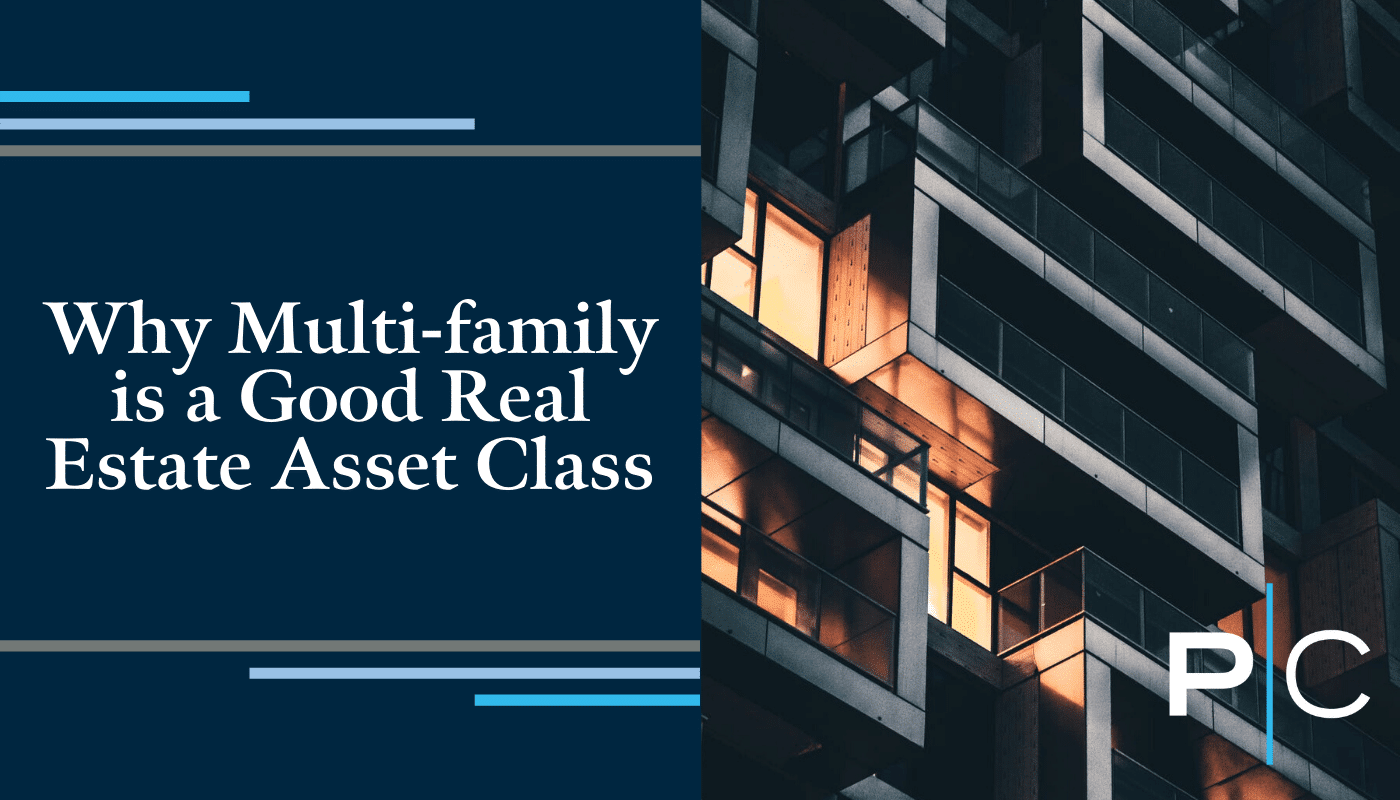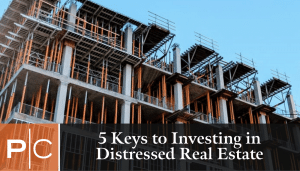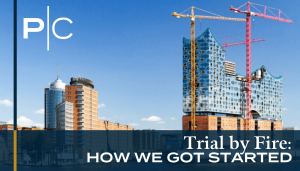Why Multi-family is a Good Real Estate Class
By Ed Rogan, Owner, Co-Founder

Investors are drawn to real estate as an alternative investment, not least of which is because of the diversity of the asset class. There are many property types, ranging from multifamily to office, hotel, retail, industrial and more, to many property classes, such as Class A, Class B, and Class C. Given the breadth of choices, investors of all kinds can usually still find a niche for themselves within the industry.
That said, there are specific reasons why some investors are drawn to multifamily real estate. For one, the residential side of commercial real estate tends to be easiest for people to understand. After all, we’ve all lived in a home (rental or otherwise) and understand how the basic mechanics of the property tend to work. What’s more, certain strategies and deal structuring can make multifamily nearly recession proof. In both a strong economy and down market, people will always need somewhere to live.
In this article, we take a deeper dive into the attributes of multifamily real estate, and why these attributes make it a highly attractive investment to those considering investing in the asset class as a whole.
What is a multi-family property?
A multifamily property is generally considered any residential building with more than one unit though technically it is defined as more than 4 units in a single building – anything 4 units or less is grouped with single family for financing purposes. Multifamily, however, does encompass small residential buildings, such as duplexes and triplexes, but also includes much larger properties such as 200+ apartment communities. Multifamily has many sub-sectors, such as student housing or senior housing, both of which are a type of multifamily housing often referred to as “special-purpose” housing.
There are other styles of multifamily housing, including:
- High-rise: a building with 9+ floors and at least one elevator;
- Mid-rise: an apartment with 5-9 stories and usually one elevator;
- Garden-style: a 1-3 story building most commonly found in suburban areas; and
- Walk-up: usually a 4-6 story building without an elevator, most commonly found in urban areas.
Typically, the larger a multifamily property is, the more amenities it might be expected to have. For example, larger apartment complexes may feature things like on-site fitness centers, recreation rooms, movie theatres and outdoor pool areas.
There is an important distinction to be made with multifamily, at least as it pertains to obtaining financing for these properties. Multifamily real estate can be considered both “residential” and “commercial” real estate when it comes to financing. Residential loans are used for properties with four or fewer units (including single-family rentals, which are not multifamily properties).
Larger multifamily properties, or those with 5 or more units, are considered “commercial” properties and therefore require different lending products. The term “commercial” often leads people to think of office or retail properties; it is important to understand that multifamily can also fall into the commercial category.
Sign up to receive our educational newsletter and to gain exclusive access to our next investment opportunity.
Benefits of multi-family property investing
There are many reasons why investors prefer to buy multifamily instead of single-family rentals or other commercial property types, including:
Portfolio diversification
Multifamily real estate is a great way for investors to diversify their portfolios beyond traditional investment vehicles, such as stocks, bonds and mutual funds. In fact, many institutional investors – including hedge funds, pension funds, insurance companies, and endowments – are starting to buy multifamily real estate, despite it once being considered an “alternative” investment.
Multifamily investing has moved much more into the mainstream over the past two decades. Even foreign investors, large and small, have begun to invest in multifamily real estate given changing demographic trends which indicate that both young and older Americans are either preferring to rent apartments rather than buying homes, or are compelled to being forced out of the ever increasingly expensive single family home market.
Easier to finance
Multifamily properties are significantly easier to finance than other property types, including single family rentals and large office buildings. One of the reasons for this is because multifamily buildings tend to be relatively “recession-proof.” Despite ebbs and flows in the market, people continue to need somewhere to live. This makes multifamily less risky than other asset types which may be more susceptible to market conditions and, therefore, are exposed to greater risk of vacancy.
In general, banks don’t like vacancy, which is another reason that makes multifamily properties easier to finance. If one or two units turn over in a 200-unit apartment building, the building is still substantially leased. Most landlords will have built in at least 5% vacancy into their underwriting, and therefore would still have plenty of cash flow to cover their debt service.
Compare this to renting a single-family property. If that tenant leaves, the landlord has no cash flow coming in and must scramble to lease the apartment quickly. Those who are under pressure to lease a unit quickly may be more likely to lease below-market rent and/or to underqualified tenants, which is another reason why SFRs can be difficult to finance.
Moreover, Fannie Mae and Freddie Mac, the two government-sponsored entities that guarantee most residential mortgages, cap the number of mortgages any one individual can hold at any given time to just 10. Therefore, an investor can only buy 10 SFR properties before maxing out whereas it would take just one loan to get a 10-unit multifamily apartment building. As it pertains to financing, there are very real benefits to owning multifamily over other product types.
Shorter-term benefits
There are a few benefits to owning multifamily real estate that can be realized in the short-term. For example, it’s easy to “set it and forget it” when buying fully-stabilized multifamily properties. This is a great option for investors who want to take a hands-off approach to commercial real estate investing. It is usually easy to find a great third-party property management company to manage the day-to-day operations of a multifamily building. Soon after closing on the property, the new owner can put the property in the hands of a management company they trust while receiving passive income on the back end.
Another short-term benefit of investing in multifamily real estate is that the units can generally be renovated relatively quickly and then released to optimize cash flow. A sound repositioning strategy can be realized in short order relative to trying to reposition other asset classes, such as office, retail and even single-family rentals, the latter of which is more dependent on hyper-local market conditions than specific property upgrades.
Multiple sources of cash flow
We’ve alluded to this already, but the primary benefit to owning multifamily real estate is that it offers multiple sources of cash flow. The more units, the more sources of cash flow. The more diversified the cash flow, the less risky the investment.
Let’s consider the example of a 20,000 SF office building that is leased to a single tenant. If the economy weakens, that office tenant may need to downsize its workforce. It no longer needs 20,000 SF of space. Instead, the tenant wants to sub-lease half their space to another tenant. However, commercial tenants tend to sign longer-term leases (usually a 5-year minimum), and given the softer economy, fewer businesses are apt to want to sign a long-term lease. If the original tenant in the 20,000 SF of space can no longer afford their rent payments, the owner will experience a significant disruption in cash flow and may find themselves underwater on their mortgage.
Additionally, there are multiple revenue streams an innovative apartment sponsor can develop to maximize their income. These might include additional revenue from designating some parking spaces closer to ingress and egress locations in the buildings as ‘preferred parking,’ and charging a premium for them. Laundry facilities can provide additional revenue streams as can storage facilities. Various services provided to tenants can also be added like insurance, cable TV, or internet access, where the sponsor/building owner can purchase in bulk from providers at discounted rates and offer to tenants as another profit center.
Related: How to go From Fix N Flips to Multi-Family Investing
Streamlined amenities
Multifamily properties also benefit from streamlined operations and amenities. For example, it would be hard to justify having a concierge or on-site property manager at a single-family or even a 20-unit apartment building. These amenities really only become cost-effective when you hit the 100+ unit apartment range, as the costs can be equally shared on a pro-rata basis across the units.
The same is true for other on-site amenities. The owner of a single-family rental property (or portfolio of SFRs) would be hard-pressed to invest in an outdoor pool, on-site fitness equipment – sometimes, even on-site laundry – relative to larger multifamily apartment buildings where the larger number of units makes these amenities more worthwhile.
Easier to find tenants
As noted above, there’s been a dramatic demographic shift in the United States with more people, young and old, choosing to rent in favor of buying their own home. Even empty nesters, those who have owned a home for decades, are starting to downsize into multifamily apartment buildings.
These demographic shifts have broadened the pool of potential renters, making it easier than ever for investors to find highly qualified tenants. What’s more, data indicate that in most major metro areas, the supply of new construction continues to lag increasing demand which is a signal that robust tenant demand will persist for the foreseeable future.
Living in your property
Multifamily properties offer enhanced benefits to investors willing to owner-occupy the building (at least initially). Owner-occupied properties tend to receive better financing terms from banks than non-owner-occupied buildings, including lower interest rates and lower down payment obligations. For example, most non-owner occupied properties will require the borrower to put down at least 20-25% at closing. An owner-occupied multifamily property can be purchased with as little as 3.5% down with an FHA loan.
An added benefit to living in the property is that it allows the investor to self-manage the building, thereby saving anywhere from 5-10% on third-party property management fees.
Sign up to receive our educational newsletter and to gain exclusive access to our next investment opportunity.
Challenges of multi-family property (and how to overcome them)
Dealing with tenants
One of the challenges with owning multifamily property is that the more units you own, the more tenants you’ll have to deal with on a day-to-day basis. It is much easier to build a relationship with a tenant in a single family rental, particularly since these tenants tend to stay longer those who live in multifamily buildings.
More tenants equal more rent payments to track, more requests for repairs and maintenance, more units to lease upon tenant turnover, and the like. This is an operational challenge that is easily solved with a high-quality management company that is trained to deal with tenant issues quickly and efficiently on your behalf.
High turnover rate
Units in a multifamily property typically turn over with more frequency than single-family rentals. Most leases run on a year-to-year basis or start at one year and then convert to month-to-month. This is significantly shorter than the lease terms at other commercial properties, such as an office or retail building, which usually require a minimum 5-year lease period (and can range upwards of 30 years, depending on the nature of the transaction).
That said, the benefit to having a higher turnover rate at multifamily properties is that it allows the owner to get rid of problem tenants after their lease expires, which can take much longer when tenants are locked into a long-term lease, and also to manage the building at maximum rental rates that can be adjusted as tenants vacate and new ones sign leases.
Management expertise
Managing a multifamily property can be challenging in the sense that there are more tenants to deal with, more leases to monitor, more requests for repairs and maintenance, etc. When dealing with multifamily buildings, it is advisable to hire a professional, third-party property manager who can take over these duties on your behalf.
Yet, despite the complexities of managing a multifamily building, multifamily properties are actually much easier to manage than a disparate portfolio of single-family properties. In the case of the latter, the owner (or management company) must spend more time traveling to and from different properties, showing units, and responding to maintenance requests (each single family home has its own set of systems, for example, vs. a multifamily property which only has one set of systems – HVAC, the roof, etc. – that covers all units).
Is multi-family investing right for you? Factors to consider
Your current portfolio
Despite the many benefits to investing in multifamily real estate, an investor has to first take a long and hard look at their current portfolio to determine whether it is a wise investment for them. If the portfolio is otherwise heavily dominated by real estate, then it may not be wise to invest in multifamily.
Conversely, if the portfolio is overwhelmingly invested in more traditional assets, such as stocks and bonds, then multifamily properties might be a great way to add diversity to the mix. Even if an investor has multifamily assets in their portfolio, diversifying into apartment buildings in different geographical locations can also help to spread risk and increase risk-adjusted returns.
Your financial status
Multifamily real estate can have a high barrier to entry. The up-front capital requirements can be steep. For example, the down payment on a $2.5 million apartment building would typically be at least $500,000 before closing costs (e.g., attorney’s fees, title insurance, etc.) is factored in. As such, multifamily tends to be a more practical investment for those who are accredited investors or otherwise high-net-worth individuals.
Management experience
Multifamily properties can be difficult to manage, especially for anyone intending to self-manage the building. Anyone who is considering investing in multifamily will want to ensure the project has a strong management partner in place and will want to build the fees for that property manager into their initial underwriting when evaluating the deal.
Conclusion
Real estate investing, as a whole, can be highly lucrative. It is an asset class that has many avenues for investors depending on their individual risk profiles and investment time horizons. Multifamily, more specifically, has several advantages that any investor considering real estate will want to consider, as outlined above.
That isn’t to say multifamily isn’t without its challenges. One of those challenges is overcoming steep competition from a broad array of investors, domestically and abroad, who increasingly want to add multifamily real estate to their portfolios. The consequence has been higher prices for multifamily, even in otherwise undervalued markets.
Any investor who is considering multifamily (or any property type, really), will want to spend significant time learning the market during their due diligence process. Take a look at the going-in rate of return (i.e. based on the underwriting today) relative to potential returns if the property is improved over time. Calculate your cap rate, internal rate of return, and cash-on-cash returns. Not sure what these terms mean? That’s a good indication that more homework is needed. Consider finding a great partner to walk you through the due diligence process, step by step, to ensure a great outcome when investing in multifamily real estate.
Meet our team at Penn Capital to find out about our expertise in investing.
RELATED ARTICLES
5 Keys to Investing in Distressed Real Estate
5 Keys to Investing in Distressed Real Estate By Ed Rogan, Owner, Co-Founder Buying distressed real estate certainly isn’t for the faint of heart. An inexperienced investor can easily be swayed by the promise of a project sponsor who doesn’t actually have a plan for turning the property around. But that doesn’t mean you shouldn’t…
READ MORE >Gaining an Edge through Cold Calling
Gaining an Edge through Cold Calling By Ed Rogan, Owner, Co-Founder In many ways, commercial real estate is an “eat what you can kill” industry. The most successful investors, developers, brokers and other CRE professionals earn their living by scouring the market to uncover the next big deal. Ask the industry’s best and they’ll often…
READ MORE >Trial by Fire: How We Got Started
Trial by Fire: How We Got Started By Ed Rogan, Owner, Co-Founder People often use the term “trial by fire” to explain how they learned something. In our case, the term is all too appropriate. Looking back on it, the story of how Percy and I got started almost seems unbelievable. We were just…
READ MORE >


